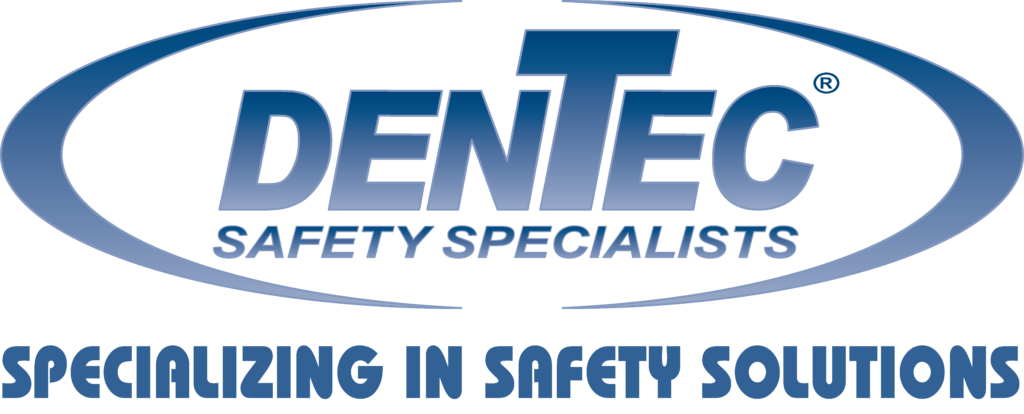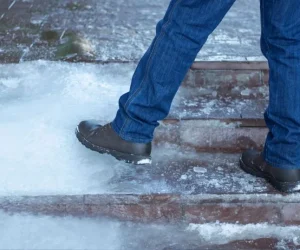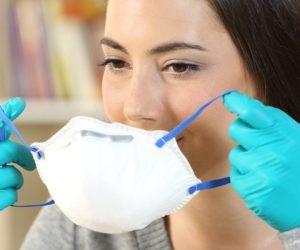Winter brings beautiful snowscapes and festive holidays, but it also ushers in cold-weather hazards that can affect workplace safety. As the temperature drops and snow and ice become part of the daily landscape, it’s crucial for employers and employees alike to understand the risks and take proactive measures to ensure a safe working environment. Be prepared with our essential workplace winter safety tips to protect your workforce from the cold-weather hazards that accompany this season.
Understanding Winter Hazards in the Workplace

Winter weather introduces several potential dangers in the workplace, including:
Slippery Surfaces: Snow and ice create slippery surfaces, increasing the risk of slips, trips, and falls. These accidents can result in injuries ranging from minor bruises to severe fractures, concussion, or worse.
Reduced Visibility: Shorter daylight hours and adverse weather conditions can reduce visibility, making it challenging for workers to see potential hazards or for others to see them.
Cold Stress: Prolonged exposure to cold temperatures can lead to cold stress, which encompasses a range of cold-related illnesses, including frostbite and hypothermia.
Use Proper Winter Personal Protective Equipment (PPE):
One of the key elements of workplace winter safety is equipping your workforce with the right personal protective equipment. Depending on your workplace, this may include:
Protective Clothing: Choose protective clothing suitable for the temperature, work being performed, and physical exertion required.
Providing employees with thermal insulation products such as hard hat liners and hand and feet warmers can help them stay warm and comfortable during cold temperatures.
Face Protection: In extreme cold, consider face masks or shields to protect against frostbite.
Anti-fog Eyewear: Prevent safety glasses or goggles from fogging up to maintain clear vision. Select eye protection with anti-fog coating or use anti-fog sprays for eyewear that does not have anti-fog coating.
High-visibility Gear: Ensure workers are highly visible in low-light conditions. High-visibility vests or jackets with reflective strips are essential for outdoor workers.
Slip-resistant Footwear: To combat slippery surfaces, invest in slip-resistant footwear that provides traction and stability. One of the most effective ways to enhance slip and fall protection in winter conditions is by equipping your workforce with reliable ice traction devices.
These ice cleats are innovative traction solutions designed to overcome the challenges of icy and slippery surfaces.
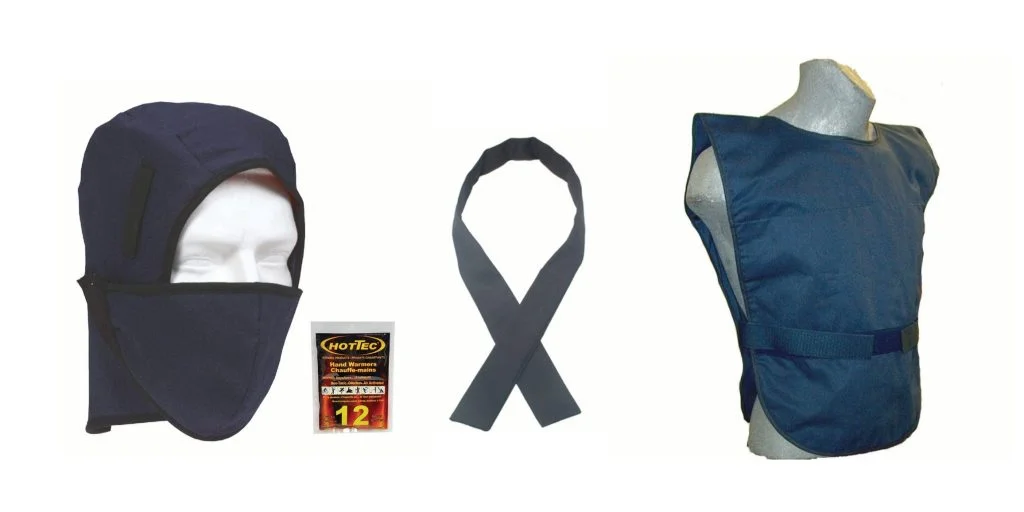
Cold Stress Prevention in the Workplace
Cold stress occurs when the body loses heat faster than it can produce, leading to potentially life-threatening conditions. Here’s how to prevent it:
Layer Clothing: Encourage employees to wear multiple layers of clothing to trap heat close to their bodies. Moisture-wicking fabrics can help keep them dry.
Stay Dry: Wet clothing and skin lose heat faster. Supply waterproof gear and ensure workers have access to dry replacements when needed.
Take Breaks: Schedule frequent breaks in warm areas where employees can warm up and hydrate.
Implement a Customized Hydration Program: Cold weather can mask the sensation of thirst, leading workers to overlook the need for hydration. Adequate hydration is a key factor in preventing cold stress. When the body is well-hydrated, it can regulate temperature more effectively and is less susceptible to cold-related illnesses like hypothermia and frostbite.
Use electrolyte-replenishing drinks that are designed to keep employees hydrated even in chilly conditions. With a range of hydration solutions, including liquid concentrates and powder mixes, you can tailor your hydration program to fit your organization’s specific needs.
Know the Symptoms: Train your workforce to recognize the symptoms of cold stress, such as shivering, numbness, confusion, and drowsiness, and encourage them to promptly report any signs.
How to Prevent Slips and Falls in the Winter

Slips and falls are among the most common workplace accidents during winter. Employers across various provinces are mandated by Occupational Health and Safety acts to uphold responsibilities ensuring the safety and well-being of their workers, particularly in adverse conditions such as slippery and cold environments. These regulations require employers to implement measures and protocols to protect employees from potential hazards related to icy surfaces and low temperatures.
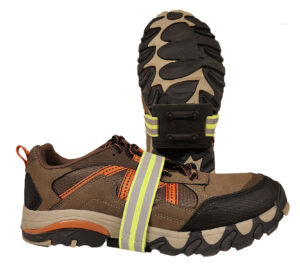
Follow the steps below to help prevent slips and falls in the workplace:
Clear Pathways: Keep walkways, stairs, and entrances free of snow and ice by regularly shoveling, salting, or sanding.
Use Slip-resistant Mats: Place mats at entrances to absorb moisture and provide traction.
Wear Appropriate Footwear and Traction Devices: Ensure that employees wear slip-resistant boots or shoes with sturdy treads and traction devices.
Walk Cautiously: Encourage workers to take shorter steps, walk slowly, and use handrails when available.
Visibility Enhancement:
Maintaining good visibility is vital for workplace safety. Ensure your employees have reliable access to the following wherever applicable:
Reflective Clothing: High-visibility clothing with reflective tape makes employees more visible, especially in low-light conditions.
Proper Lighting: Ensure adequate lighting in work areas, both indoors and outdoors, to improve visibility.
Clean Safety Glasses: Regularly clean and inspect safety glasses or goggles to prevent fogging and maintain clear vision.
Winter Safety Training:
Education is a critical component of winter safety. Adherence to the following steps will help create great awareness and understanding:
Conduct Training Sessions: Teach employees about winter hazards, how to use PPE effectively, and what to do in case of cold-related emergencies.
Create an Emergency Plan: Establish clear procedures for dealing with cold stress, frostbite, and other winter-related emergencies.
Review Safety Policies: Remind workers of your company’s safety policies and the importance of adhering to them year-round.
Winter Emergency Preparedness:

Ensure that your workforce is prepared for emergencies by providing:
First Aid Kits: Ensure that first aid kits are well-stocked and readily available to your employees.
Consider adding sufficient quantities of instant warming packs to quickly warm employees should cold stress or hypothermia occur.
Emergency Contact Information: Provide a list of emergency contacts and procedures for reporting incidents.
Shelter and Warming Areas: Designate sheltered areas where employees can seek refuge during extreme cold spells.
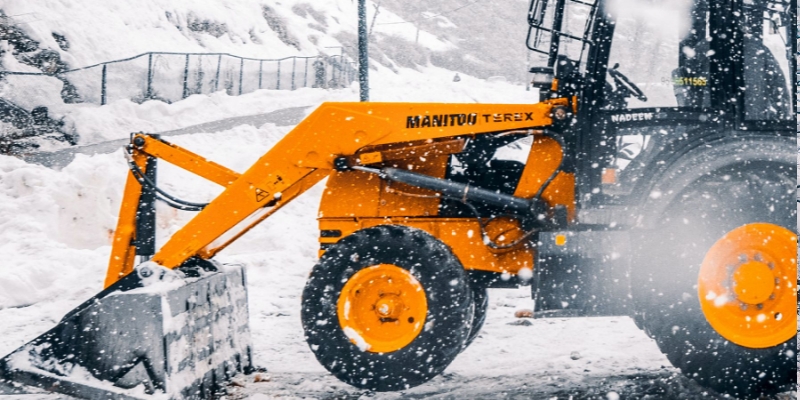
Make Winter Workplace Safety a Priority
Winter safety in the workplace is a shared responsibility. Employers must provide the necessary tools, training, and support, while employees must follow safety guidelines diligently. By understanding and addressing the unique hazards of winter, your organization can maintain a safe and productive work environment, even in the coldest months.
Dentec Safety Specialists are committed to helping you safeguard your workforce during the winter season. Our range of winter PPE products, including insulated clothing, anti-slip footwear, and high-visibility gear, is designed to help protect your employees from cold-weather hazards. Stay warm, stay safe, and contact us for all your winter safety needs.
For information check out: Winter’s Coming: Personal Protection & Safety Tips for Colder Weather

Dentec Safety is a leading manufacturer and distributor of safety products in the North America since 2004. Dentec Safety is dedicated to providing the highest quality safety products and solutions delivering enhanced value and comfort. Our expertise from decades of experience in Industrial Safety and our innovative design technologies have solidified us as thought leaders in the field. Protection and comfort are at the core of everything we do at Dentec. As a leading manufacturer of Safety Solutions, it is our mission to help organizations do the right thing, keep their employees safe and exceed Industry Health & Safety Standard.
